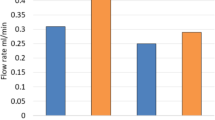Abstract
Patients with kidney failure can emit bad breath with a certain level of ammonia content. The interpretation of ammonia levels in patients with renal failure was identified in this work. This research used the Chronic Kidney Disease dataset from UCI Machine Learning Repository. The dataset was processed first to get the value of eGFR (estimated Glomerular Filtration Rate) and ppb (parts per billion) of ammonia. Based on the eGFR value, the severity of kidney failure was divided into 5 categories, namely normal (Stage 1), mild (stage 2), moderate (stage 3), severe (stage 4) and failure (stage 5). The values of eGFR features are used as input for the machine learning technique in order to predict the level of kidney failure. Four different types of machine learning techniques, namely Support Vector Machine (SVM), Naïve Bayes (NB), Artificial Neural Network (ANN) and K-nearest neighbors (KNN), are applied and compared. The last process was to identify kidney failure using the K-Nearest Neighbors (KNN) method based on eGFR and ppb of ammonia dataset. AI-based kidney failure severity identification system with KNN algorithm had an average accuracy of 89.9% and 95.65% for training and testing accuracy, respectfully.
Access this chapter
Tax calculation will be finalised at checkout
Purchases are for personal use only
Similar content being viewed by others
References
Jager KJ, Kovesdy C, Langham R, Rosenberg M, Jha V, Zoccali C (2019) A single number for advocacy and communication—worldwide more than 850 million individuals have kidney diseases. Kidney Int 96:1048–1050
Ma F, Sun T, Liu L, Jing H (2020) Detection and diagnosis of chronic kidney disease using deep learning-based heterogeneous modified artificial neural network. Futur Gener Comput Syst 111:17–26
Narasimhan ALR, Goodman W, Patel CKN (2016) Correlation of breath ammonia with blood urea nitrogen and creatinine during hemodialysis. 98:4617–4621
Palaniappan P, Raveendran P, Nishida S, Saiwaki N (2000) Autoregressive spectral analysis and model order selection criteria for EEG signals, vol 2. TENCON proceedings. Intelligent systems and technologies for the new millennium (Cat. No. 00CH37119), pp 126–129
Nandar A (2009) Bayesian network probability model for weather prediction. In: International conference on the current trends in information technology (CTIT), pp 1–5
Duda RO, Hart PE, Stork DG (2001) Pattern classification. Wiley
Kuncheva LI, Hoare ZSJ (2008) Error-dependency relationships for the naïve Bayes classifier with binary features. IEEE Trans Pattern Anal Mach Intell 30:735–740
Thiruvengatanadhan R (2018) Speech recognition using SVM, pp 918–921
Kaggle. Chronic KIdney disease dataset|Kaggle. https://www.kaggle.com/mansoordaku/ckdisease. Last accessed 29 Apr 2021
Author information
Authors and Affiliations
Corresponding author
Editor information
Editors and Affiliations
Rights and permissions
Copyright information
© 2023 The Author(s), under exclusive license to Springer Nature Switzerland AG
About this paper
Cite this paper
Phandinata, N., Puji, M.N., Astuti, W., Andriatin, Y.A. (2023). Study on Optimal Machine Learning Approaches for Kidney Failure Detection System Based on Ammonia Level in the Mount. In: Mukhopadhyay, S.C., Senanayake, S.N.A., Withana, P.C. (eds) Innovative Technologies in Intelligent Systems and Industrial Applications. CITISIA 2022. Lecture Notes in Electrical Engineering, vol 1029. Springer, Cham. https://doi.org/10.1007/978-3-031-29078-7_5
Download citation
DOI: https://doi.org/10.1007/978-3-031-29078-7_5
Published:
Publisher Name: Springer, Cham
Print ISBN: 978-3-031-29077-0
Online ISBN: 978-3-031-29078-7
eBook Packages: Intelligent Technologies and RoboticsIntelligent Technologies and Robotics (R0)




